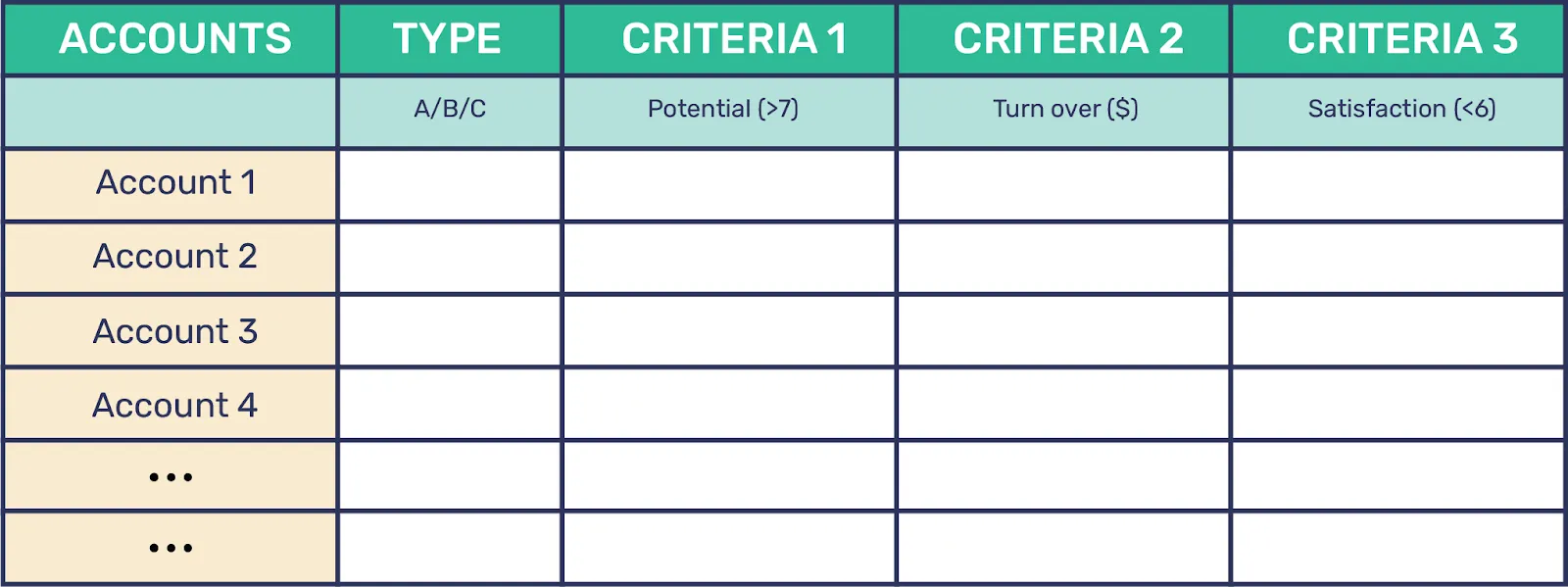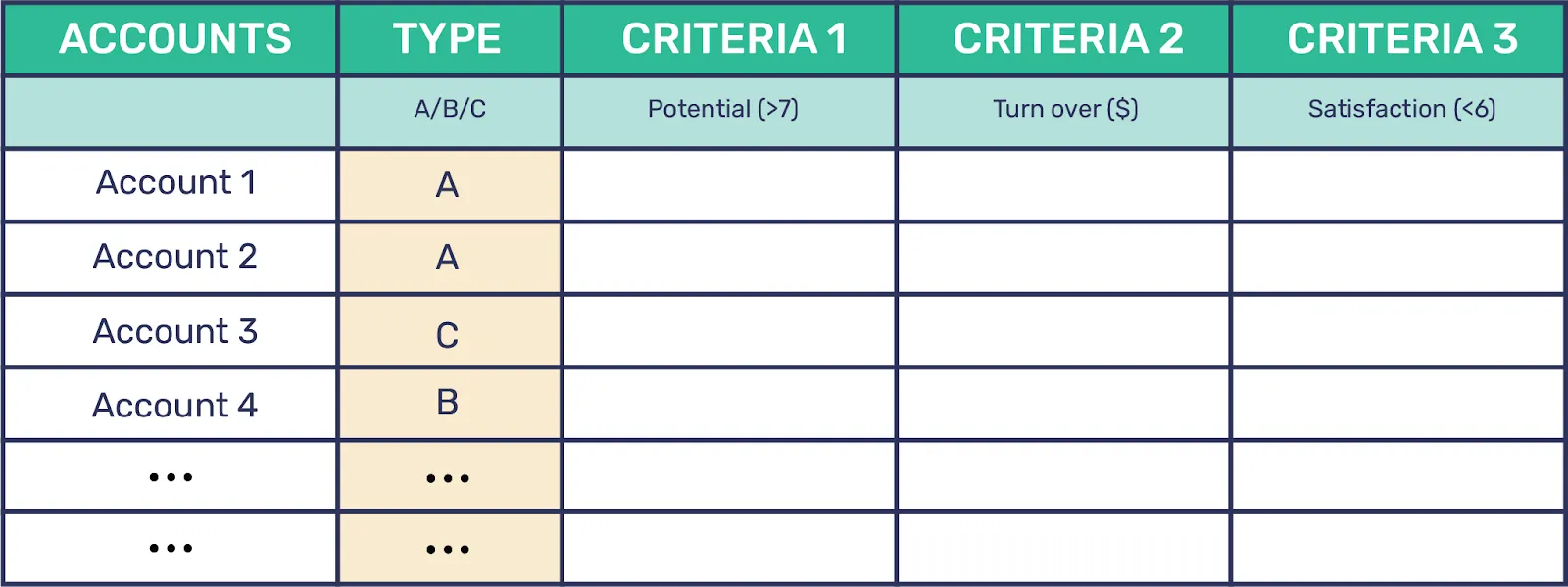
BRM - known as Business Relationship Management - is a business software that allows you to segment your brokers, resellers, intermediaries, and sales partners based on criteria like turnover and account type. Using BRM software not only lets you conduct sales management effectively. It can also be used by your relationship and channel partner managers to perform evaluations, give feedback, and foster collaboration between your channel sales partners. BRM is a vital tool in business but what if you don’t have one (yet)? What if you don't have the budget for it? Can you start using the same principles that you find in a BRM tool? Yes, you can, let me explain how you can do it through Microsoft Excel.
1. Track your accounts
The first thing you need to do is to track your accounts.

Ask someone from your team to get a list of the accounts from your CRM system. You can ask anyone to obtain this list and you’re set to get started. All you need is to take note of certain variables for each account like the account type, account managers, or turnover rate.
2. Evaluate your accounts
Once you’ve obtained the list, upload it to a spreadsheet. Next, think about three or more criteria that you can use to evaluate your accounts. Pick the criteria that are most important for you. You can then determine how to score your different business partners or accounts based on your chosen criteria. For example, evaluate each account’s potential turnover with a score from 0 to 10. If you know each account’s actual turnover, that’s great, and you don’t need to score it. Simply evaluate them based on their current turnover.

Another criterion could be partner satisfaction. How satisfied are your business partners with your working relationship? Is it easy to collaborate with sales reps or do you struggle to get in touch with them? While you might not have these values at your current disposal, an easy alternative is to ask your (channel) account manager to score each account or give the scores yourself. Don’t worry if these scores are not 100% accurate because the purpose is to merely differentiate one account from another account.
3. Define your values and criteria
Once you’ve scored each account, define the following:
- What values are important for you?
- Which criteria could be a good starting point for you to create a subset or an action plan?

4. Set up an action plan
An action plan is focused on setting an objective and defining the key results. You won’t get to the top immediately so follow up to achieve your goals. If you don’t have a plan yet, then set aside time to create it with your sales partners. We wrote another blog where we explained the basics of a successful action plan.

Wrapping it up
What happens next? Your business relationship management won’t be perfect from the beginning. In another video, we explain how you can ensure everything is set up well, but try it out in Excel in the meantime. Ask someone from the sales team to get your list out of the CRM. Define three criteria that you can use to evaluate each account. Afterward, define the values that are important to you, and create a subset and an action plan. Set up an action plan based on objectives and key results (OKR).
How are you evaluating and managing your partners without a BRM tool? Do you want to learn more about BRM tools? Let us know.



